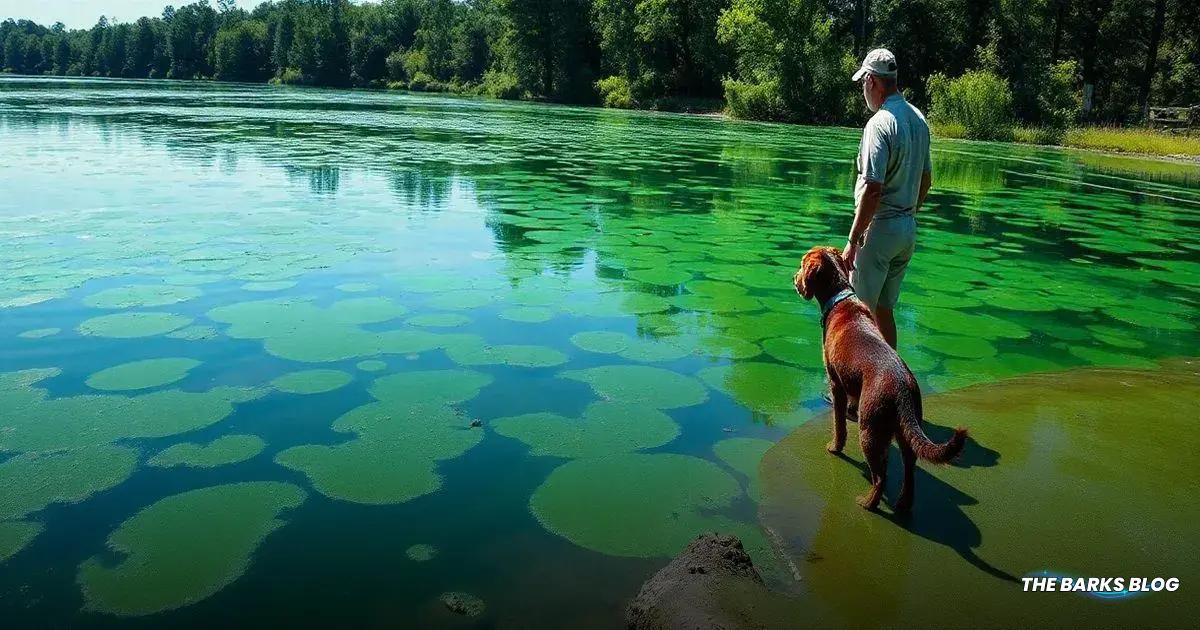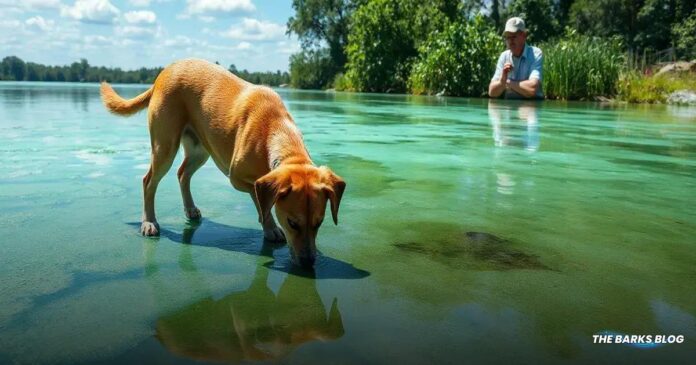Blue-green algae, or cyanobacteria, can be highly toxic to dogs, causing severe health issues like liver failure. Symptoms include drooling, difficulty breathing, weakness, and seizures. Immediate veterinary care is essential if a dog shows distress after exposure to contaminated water. While there is no antidote for poisoning, prompt treatment can help manage the condition. Pet owners should be cautious near water bodies, especially in warmer months when algae blooms are common, to protect their pets.
Blue green algae can pose serious health risks to dogs and their owners. Understanding what blue green algae is and how it affects dogs is crucial for pet safety.

What Is Blue-Green Algae?
What Is Blue-Green Algae?
Frustratingly and confusingly, blue-green algae aren’t actually algae! They are bacteria, scientifically known as cyanobacteria. So, why are they called blue-green algae? Because they look just like algae when they’re clumped together in bodies of water like lakes, streams, and ponds.
Blue-green algae can also occur in birdbaths and pots in your yard. You can’t see blue-green algae with your naked eyes unless it’s clumped together. It’s more commonly seen during the hotter, drier summer months when it rains less and in water that doesn’t have much of a flow. Typically, these blooms thrive in water that reaches over 75°F.
When you spot blue-green algae, it often appears as a blue-green clump of flakes or bundles on the surface of the water, usually near the edges. Some describe its appearance as similar to soup or paint. If you notice dead fish in the area, that could indicate an algae problem.
Remember, blue-green algae may be present even if you can’t see it. Always exercise caution around water bodies that may be contaminated.

Blue-Green Algae Symptoms in Dogs
Blue-Green Algae Symptoms in Dogs
If your dog has swum, paddled, or drunk from water potentially infected with blue-green algae, watch for any of the following symptoms:
- Noticeably drooling
- Difficulty breathing
- Weakness
- Collapse
- Confusion
- Unconsciousness
- Jaundice (turning yellow)
- Seizures
- Excessive tearing
- Pale gums
- Vomiting
- Diarrhea
Contact your vet immediately if you notice any of these symptoms and inform them about your dog’s potential exposure to contaminated water. They will likely advise you to bring your dog in for an examination as soon as possible.
There is no antidote for blue-green algae poisoning, but your vet may attempt to flush the bacteria from your dog’s system through methods like induced vomiting, administering fluids, or using oral activated charcoal to absorb the toxins. In some cases, they may pump your dog’s stomach.
Keep in mind that these symptoms can mimic other illnesses, so only a veterinarian can determine the exact cause. If your dog seems unwell, it’s crucial to seek veterinary care promptly.
PetLab Co. Pro Tip: Blue-green algae is also toxic to cats. If you own a cat and live near a body of water that may be infected, contact your vet immediately if you suspect they’ve ingested contaminated water.
Conclusion
Understanding the dangers of blue-green algae is essential for all pet owners. This harmful bacteria can pose serious health risks to dogs, and recognizing the symptoms early can save lives.
Always be vigilant around bodies of water, especially during warmer months when blue-green algae blooms are more likely to occur.
If your dog shows any signs of distress after exposure to water that may be contaminated, don’t hesitate to contact your veterinarian immediately. Protecting your furry friend from the risks associated with blue-green algae is a crucial part of responsible pet ownership.
Stay informed, take precautions, and ensure your dog’s safety while enjoying the great outdoors!
FAQ – Frequently Asked Questions about Blue-Green Algae and Dogs
What is blue-green algae?
Blue-green algae, scientifically known as cyanobacteria, are actually bacteria that can bloom in warm, stagnant water, resembling algae.
How can blue-green algae affect dogs?
Many variations of blue-green algae can be toxic to dogs, potentially causing liver failure and other severe health issues.
What symptoms should I watch for if my dog is exposed to blue-green algae?
Symptoms include drooling, difficulty breathing, weakness, collapse, confusion, jaundice, seizures, vomiting, and diarrhea.
What should I do if I suspect my dog has ingested blue-green algae?
Contact your veterinarian immediately and inform them about your dog’s exposure to potentially contaminated water.
Is there a treatment for blue-green algae poisoning in dogs?
There is no antidote, but veterinarians may use methods like induced vomiting, activated charcoal, or IV fluids to treat the poisoning.
Can humans be affected by blue-green algae?
Yes, blue-green algae can cause severe illness in humans, including symptoms like vomiting, rashes, and stomach pain.




